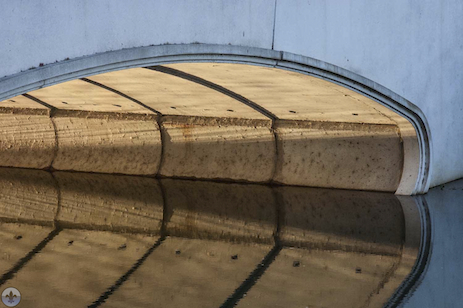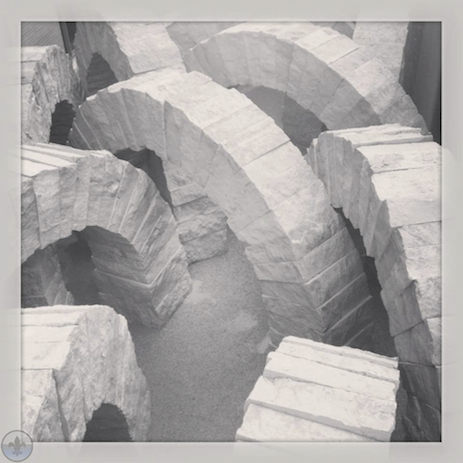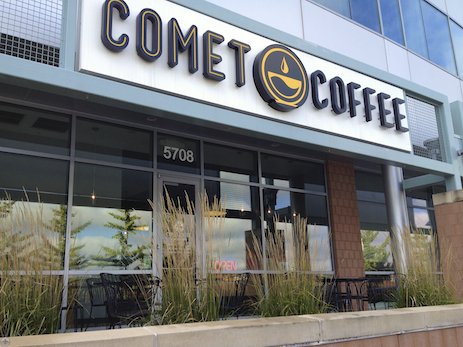photograph by Dan Henrichs Photography, St. Louis
Recently named one of the ten most beautiful urban parks in the world by Yahoo Travel, Forest Park really has something for everyone. Photo Flood Saint Louis returns to this legendary city sanctuary for what turned out to be a spectacular, Fall, early morning shoot.
photograph by Andy Holman
photograph by Jason Gray
photograph by Janet Henrichs
photograph by Ann Aurbach
photograph by Theresa Harter
St. Louis is a city lucky enough to be blessed with an abundance of outdoor activities available just minutes away. Capping this excellent resource is the crown jewel of the city’s urban greenspaces, Forest Park. Counter to its present popularity, the Park lacked full public support at the time of its founding in 1876. Critics felt that the Park was to be located too far away, in an area that lacked any significant development (before this time, St. Louis had grown mostly in directions parallel to the river). Related to this, residents north and south of downtown argued that the new City Park would be too distant to travel in a single day, and demanded parks of their own. Both Carondelet Park and O’Fallon Park were established as a compromise to allow for the passage of the proposal to build Forest Park. The city anticipated Forest Park to be an excellent anchor to its new western border (St. Louis City separated from St. Louis County in the same year as Forest Park’s founding), and would draw development west from downtown. In part, they were correct, shortly thereafter, neighborhoods surrounding Forest Park sprang fully into existence, including DeBaliviere Place, Central West End, and Forest Park Southeast. However, the newly formed St. Louis County seat, Clayton, benefitted just as equally, due its close proximity and the subsequent ease of extending existing transportation lines, and so began the first significant westward movement of people from St. Louis to places beyond its borders.
photograph by Theresa Harter
photograph by Dan Henrichs Photography, St. Louis
photograph by Mandi Gray
photograph by Janet Henrichs
Despite all of the controversy and residual effects, the 1300 acre greenspace welcomed more than 50,000 visitors upon its opening day, on June 24th. Forest Park was originally laid out by landscaper Maximillian Kern, responsible also for Lafayette Park and Compton Heights Reservoir Park, and drew its design inspiration from grand urban parks in Europe and Central Park in NYC. In 1885, streetcar lines were finally extended to the Park (in addition to the former train line), which enabled many more city residents to enjoy the quiet setting. By the 1890’s, millions of persons were visiting the Park each year, which necessitated the construction of two terminal pavilions for streetcar passengers (the tower of the Lindell Pavilion still stands as part of the Visitor’s Center). Early in the next century, Forest Park was selected as the host location for the enormous 1904 Louisiana Purchase Exposition (unsurpassed in scale until Expo 2010 in Shanghai). The St. Louis World’s Fair, as it came to be known locally, was comprised of more than 900 structures (some accounts say as many as 1500), including those along the mile-long Pike, and the still impressive, Smithsonian Aviary. The only permanent building left behind was the Palace of Fine Arts, a Beaux Arts masterpiece designed by London-based architect, Cass Gilbert, and now known simply as the Saint Louis Art Museum.
photograph by Dan Henrichs Photography, St. Louis
photograph by Mandi Gray
photograph by Jason Gray
Although a monumental success for St. Louis, the World’s Fair dealt a heavy blow to the natural beauty of Forest Park. During its reconstruction, Fair organizers and civic leaders (using Fair profits) had two buildings constructed inside the Park to commemorate the event; the World’s Fair Pavilion was built in 1909-10 on the site of the Fair’s Missouri Building, and the Jefferson Memorial Building (now the Missouri History Museum) was erected in 1913. In 1911, the famous tennis champion, Dwight F. Davis, became St. Louis Parks Commissioner, and oversaw a period of conservatism regarding the Park and its maintenance. Davis, originator of the Davis Cup, was an advocate of athletics, and so approved for the installation of various sports fields and golf courses, but rejected any other proposals to underscore the landscape of the Park. His restrictive stewardship means that we get to enjoy a Park of mostly uninterrupted natural beauty today, but became a problem when civic sponsors sought to establish a zoo there early in his tenure. Essentially, Davis most opposed the construction of any new buildings; his feeling was that the parks were for the people, and that by constructing private buildings in them, the city would reduce the available space for public enjoyment, increase pollution (a major problem in St. Louis at the time), and create the potential for restricted access. Nonetheless, a public measure was passed, and the city’s second oldest and largest zoological park was founded as the St. Louis Zoo. Subsequent attractions that opened in the Park include the art deco Jewel Box, the outdoor Municipal Opera (The Muny), the St. Louis Arena (later, it was cut off from the Park by the highway and later still, completely demolished), the Steinberg Memorial Skating Rink, the Planetarium, and a small airfield with adjoining hanger (now the stable for the Mounted Police). In 1971, voters in both St. Louis City and County voted to approve an additional property tax that would support what became known as the Metropolitan Zoological Park and Museum District (originally comprised of the St. Louis Zoo, Saint Louis Art Museum and the Science Center, it later expanded to include the Missouri Botanical Garden and the Missouri History Museum). This tax helped to provide operating costs for the “ZMD”, which had become negatively impacted by the declining population of St. Louis. Today, with the aid of this tax, all of the institutions listed above, except the Missouri Botanical Garden (which always charged an admission fee) are free to enter, representing a public’s commitment to its cultural organizations that is rare in any city.
photograph by Jason Gray
photograph by Theresa Harter
photograph by Janet Henrichs
In the 1970’s, as population decline accelerated throughout the region, Forest Park began a period of decline and neglect. Over time, the Park’s outdated and ill-kept paths and lighting fixtures, and crumbling facilities, attracted the wrong kind of visitor, and the area became synonymous with crime, even during broad daylight. In 1986, a public initiative, called Forest Park Forever, was formed to combat the Park’s negative perception and to make whatever necessary improvements needed to restore its former beauty and tranquility. In 1995, the Forest Park Master Plan was adopted by the city, and continues to operate as a field manual and model for Park rehabilitation. Since then, collaboration between the organization, which raises funds through private donations, and the city has resulted in much rejuvenation, and Forest Park is once again considered a natural treasure, both to native St. Louisans and foreign visitors alike.
photograph by Ann Aurbach
photograph by Mandi Gray
photograph by Andy Holman
photograph by Jason Gray
Our end point for Photo Flood 15 was Comet Coffee. Granted, Comet has a bit of a reputation for taking a little time to serve up a cup of joe, but if every “cup of joe” tasted like the carefully crafted (ie. by the cup) coffee at Comet, we’d all adjust our expectations a bit. If you haven’t visited them yet, definitely go; the coffee is beyond excellent, and the croissants were darn good too.
photograph by Jason Gray



























